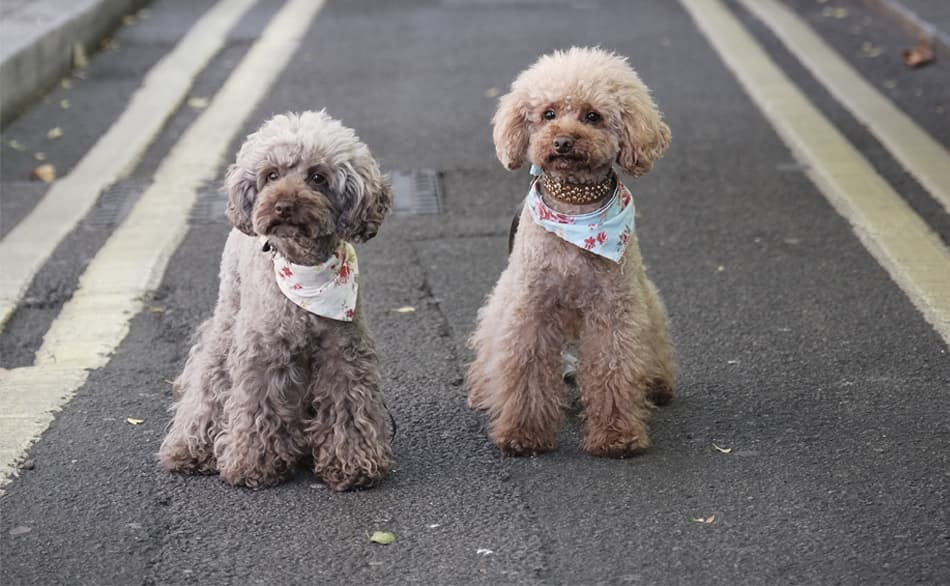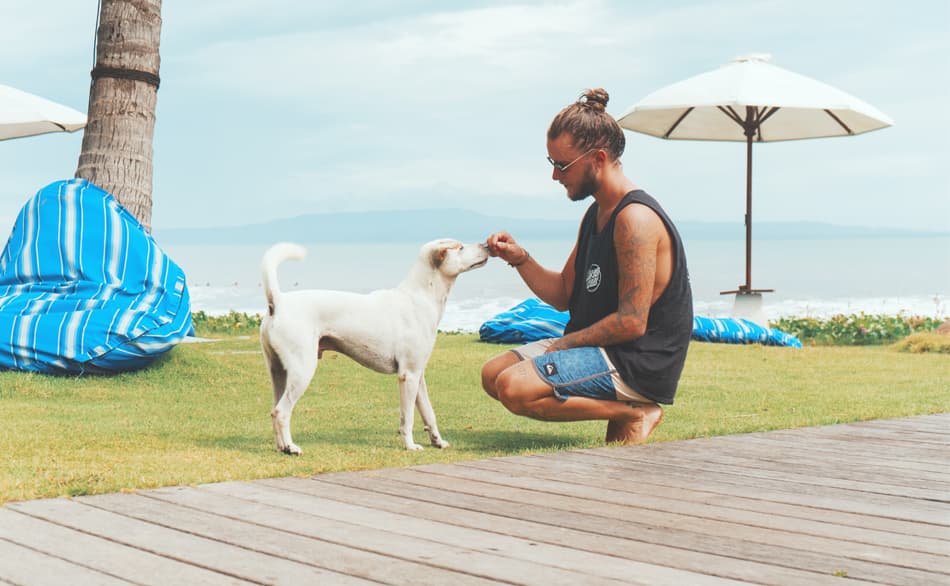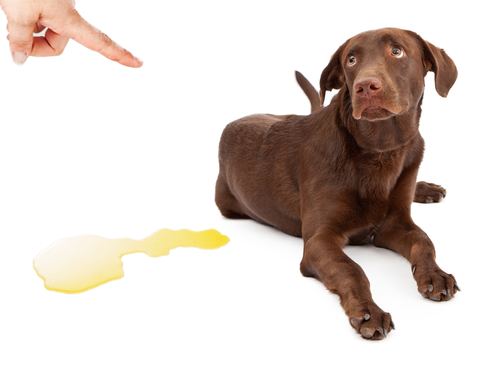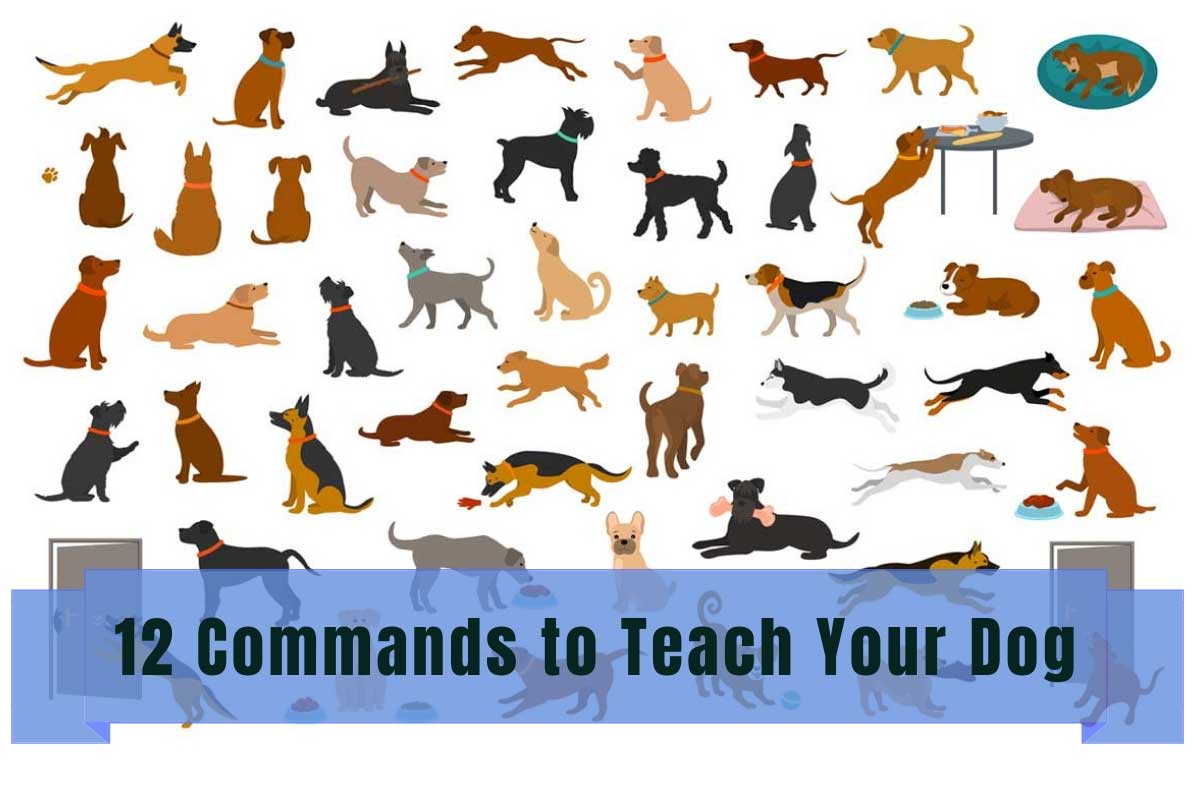
You may be at your wit’s end when it comes to your aggressive pup – after all, nobody wants to be the one with an aggressive dog. You may think that it looks shameful and embarrassing on you for not being able to train your dog properly. If you have an aggressive dog, it really may not be your fault. Whether you adopted your dog as a puppy or as an adult, there are multiple factors that contribute to them being aggressive. That said, the main cause is usually a lack of socialization from a young age. We’re here to let you know that it may not be too late to socialize your aggressive dog and get them on the right track. Here are some tips and tricks on how to start making the switch away from aggressive dog.
Contents
Why do dogs become aggressive?
Dogs become aggressive for a variety of reasons that can be hard to pinpoint at times. Once you have ruled out illness as a reason for your dog’s aggression, there are a few big reasons why your dog may have always been aggressive or why they have suddenly become aggressive out of nowhere:
- Fear is the primary reason why dogs become aggressive and it can be the result of a few different scenarios. The most common is lack of socialization which we’ll touch on later in this article. Fear can also be brought on by negative previous experiences with other dogs, and, sadly, abuse at the hands of past owners. This may especially be the case if you have adopted a pup and you don’t know its previous history.
- Anxiety or nervousness is another reason that dogs get aggressive which is not quite the same as fear. Anxiety can be brought on by a change of scenery, a new family, or somebody new moving into the home. Although the dog isn’t exactly scared, their anxiety may cause them to exhibit mild to moderate aggressive behavior.
- Resource guarding is another possible reason for aggression which also stems from fear. This kind of fear comes from the fear of having something they love being taken away, such as their food dish, a favorite toy, or something that they know that they’re not supposed to have but that they want.
- Leash aggression can be a little surprising as you may not have been expecting it. Many dogs who are not aggressive at all before putting on a leash become aggressive as soon as they’re outside and see another dog. This is usually caused by feeling too constricted or restrained by their leash and wanting the freedom to run whatever they please.
- Frustration is another reason why a dog may act out and become aggressive and it’s usually caused by the dog not being able to get something they want. They end up taking it out another animal, or even a human.
- Breed and genetics are two more highly probably reasons why a dog may become aggressive, too, which is unfortunately a little out of your control.

Although it’s most important to socialize your dog between eight weeks and four months, a lot of the time, this may not be possible either because you weren’t aware of how important socialization was at that age or you adopted your dog after this period of time. Socializing your dog is important at any age as continued exposure to new people, animals, and situations will help ensure that they don’t perceive anything as a threat, and, as a result, they’re not afraid of anything. Not only do you want your dog to feel comfortable in any situation but you also want to be comfortable as well. The last thing you want to do is take your dog to a public place and be terrified that they’re going to be aggressive with another animal or maybe you already know that you can’t take them anywhere and miss out on valuable opportunities because of it.
Punishing an aggressive dog
It’s incredibly important that you do not try to punish an aggressive dog for their behavior. Since aggression often comes out of fear, you do not want to add to that fear by making your pup fear you as well. Keep in mind that if your dog had it their way, they would not be afraid and would therefore not be aggressive. You need to avoid forceful punishment at all costs and participate in positive reinforcement instead.
If you know you have an aggressive dog, you most likely have no idea on how to go about training them. After all, you can’t exactly take them to a dog park, throw them into a group of dogs, and hope that they adapt. Socializing aggressive dogs has to be approached differently and certainly a lot more slowly.
1. Figuring out what sets your dog off
Before you socialize your aggressive dog, you need to figure out their triggers, or what sets them off. Make a list if you have to. It could be anything from a noise, a particular characteristic about a person, or a particular type of dog (large, small, whether they’re a puppy or a full-grown dog, etc.).
2. Determine your pup’s thresholds
How far away can your dog be from the thing that sets them off and still be able to manage their fear/aggression? This doesn’t count if your pup can’t actually see their trigger. Make sure your dog can spot the trigger and see how far away they have to be from it before they start getting upset.
3. Put safety precautions in place
Before you start taking your pup anywhere near what it is that’s causing their aggression, make sure you have safety measures in place. This means some sort of physical barrier from being able to get to or physically harm their trigger. This can be in the form of a lot of things: baby gates, a muzzle, making sure your dog is comfortable in a crate, being able to close your blinds if something outside is upsetting them, etc. The most important lesson hers is do not set your pup up for failure. Respecting their thresholds and making sure that you’ve put safety precautions in place are key to moving onto the next step.
4. Avoidance is key
Yes, this may sound like the wrong advice to improve an aggressive pup’s socialization skills but it’s true when it comes to triggers. Don’t set your dog up for failure by exposing them to their triggers. You already know that this thing scares them and forcing exposure does not help. You have to change your behavior to avoid the triggers. You can do this in a variety of ways, from crossing the street when you’re out walking your pup when you see the particular something that triggers their aggressive behavior to making sure that your dog is left alone when they’re eating if they’re aggressive about guarding their food. Try asking strangers to please avoid touching or petting your dog and speak up when it comes to protecting them. You may not want to come off as rude to other people but keep in mind that you are personally at fault if your dog attacks another human or animal.
5. Make sure you’re taking care of your pup’s needs

You don’t want to exacerbate the situation and making sure that your dog’s basic needs are met across the board makes sure that they are comfortable in their daily lives. Is your dog being exercised enough? Are they getting the proper nutrition? Are they being played with and given toys for entertainment? Make sure that your pup is happy to eliminate any extra aggression. You should be certain that the triggers are the only thing upsetting your dog and not the fact that they’re lacking something important in their lives.
6. Teach your dog basic obedience training
Making sure that your dog knows basic commands helps when it comes to warding off aggressive behavior and distracting them from their triggers. The key to applying basic commands in this situation is to make sure that they’re concentrating on something else and to help them realize that whatever’s triggering them does not have to be so upsetting. Making sure that they’re concentrating on you, their protector and hero, will help them realize that they’re safe and that you got them as well as providing a distraction.
7. Reward, reward, reward
The final step is rewarding your pup for every tiny bit of progress they make in regards to having contact with their trigger. If they can see their trigger and they do not start barking, growling, or negatively reacting, give them a treat and all the positive reinforcement that they can get. They don’t have to not react at all but it should be a less negative reaction than they would normally have. (If your dog does react negatively to the trigger, take a step back from the situation and wait until your pup calms down). If your dog’s reaction to the trigger is less intense, keep getting closer to the trigger, rewarding them along the way. Once you can effectively cross this bridge, start having them do basic commands such as sit, stay, lie down, etc. in proximity of the trigger to increase their ability to feel at least somewhat comfortable around it. Teaching your pup a cue when they see the trigger is even better, such as touching your hand with their nose. That way they’ve acknowledging to you that they’ve seen it and it becomes more of a game than anything, not something that they need to be afraid of. Remember, when it comes to socializing an aggressive dog, patience and preparation is key. This is a situation where somebody could get hurt and you do not want that. Understand that your pup does not want to be scared or aggressive and would much rather not be afraid of their trigger. Work with your pup on their fear as often as you can for no more than five minutes at a time and make sure that you’re not pushing them too hard. The most important thing to remember is don’t ever give up on your dog. If you need to hire a professional trainer to come in and help you, then go ahead and do that. Socializing an aggressive dog is not impossible and comes down to you implementing these slow and gradual steps. If you are patient and persistent, you can introduce your dog to more and more social situations and you’ll both be able to lead a more normal life. Don’t get discouraged and remember that you are your dog’s best friend. They would do this for you if they could and would never in a million years give up on you.
I grew up in a household that was filled with animals. I believe that my fate as a dog-loving person was sealed in early childhood since my parents owned several dogs of varying sizes and breeds. There was no choice but to take care of and learn about dog habits and the best animal care practices — otherwise, I’d be clueless about how to go about the creatures I was surrounded by day and night.
As a life-long puppy lover, I know a thing or two about dogs and how to go about caring for them in the best way possible. Although I’m not a professionally trained dog behaviorist, trainer, or veterinarian, all of my knowledge and experience with canines comes from a place of love and a deep-rooted passion for dogs and animals in general.
Seeing as dogs kept me company throughout every stage of my life, I decided to follow a different path in my academic life and obtained a Bachelor’s and Master’s degrees in Marketing Management and Digital Advertising, which ultimately allowed me to combine my professional training and personal experience by creating the ultimate dog lover’s resource website! Along with my husband, Dave, I run MySweetPuppy for like-minded dog lovers who want to have a single, clear, and reliable information source about anything and everything related to dogs and their well-being.



